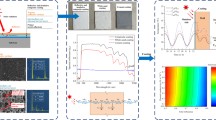Abstract
This research was conducted to study the performances of the heat and multilayer reflection insulators used for buildings in South Korea to realize eco-friendly, low-energy-consumption, green construction, and to contribute to energy consumption reduction in buildings and to the nation’s greenhouse gas emission reduction policy (targeting 30% reduction compared to BAU(business as usual) by 2020). The heat insulation performance test is about the temperatures on surfaces of test piece. The high air temperature and the low air temperature were measured to determine the overall heat transfer coefficient and thermal conductivity. The conclusions are drawn that the heat transmission coefficients for each type of existing reflection insulator are: A-1 (0.045 W/(m·K)), A-2 (0.031 W/(m·K)), A-3 (0.042 W/(m·K)), A-4 (0.078 W/(m·K)), and the average heat conductivity is 0.049 W/(m·K); The heat conductivity for each type of Styrofoam insulator are 0.030 W/(m·K) for B-1, 0.032 W/(m·K) for B-2, 0.037 W/(m·K) for B-3, 0.037 W/(m·K) for B-4, and the average heat conductivity is 0.035 W/(m·K) regardless of the thickness of the insulator; The heat conductivity values of the multilayer reflection insulators are converted based on the thickness and type C-1 (0.020 W/(m·K)), C-2 (0.018 W/(m·K)), C-3 (0.016 W/(m·K)), and C-4 (0.012 W/(m·K)); The multilayer reflection insulator keeps the indoor-side surface temperature high (during winter) or low (in summer), enhances the comfort of the building occupants, and conducts heating and moisture resistance to prevent dew condensation on the glass-outer-wall surface.
Similar content being viewed by others
References
LEE E J. Technology analysis of zero energy solar buildings and their examples [R]. Korea Institute of Energy Research, 2006. (in Korean)
Ministry of Knowledge Economy. A law for rationalization of energy consumption, Ministry of Knowledge Economy [EB/OL]. [2011-09]. http://www.mke.go.kr. (in Korean)
KIM J J, MOON J W. Energy effects of insulation for a single-family home [C]// 11th International Building Performance Simulation Association Conference, Building Simulation. Glosgow: University of Strathclyde, 2009: 674–680.
JIN Woo-moon. Impact of reinforced standard for envelope insulation on the regional heating and cooling energy consumption [J]. Korean Journal of Air-Conditioning and Refrigeration Engineering, 2011, 23(6): 646–655. (in Korean)
KWON Young-cheol, UM Sang-kweon. A study on the design of the complex insulating wall including reflective insulation [J]. Journal of KIAEBS, 2010, 4(2): 83–89. (in Korean)
AL-HOMOUD M S. Performance characteristics and practical applications of common building thermal insulation materials [J]. Building and Environment, 2005, 40(3): 353–366.
LIANG Han-Hsi, HO Ming-Chin. Toxicity characteristics of commercially manufactured insulation materials for building applications in Taiwan [J]. Construction and Building Materials, 2007, 21(6): 1254–1261.
BAETENSA R, JELLE B P, GUSTAVSEND A. Aerogel insulation for building applications: A state-of-the-art review [J]. Energy and Buildings, 2011, 43(4): 761–769.
BAETENS R, JELLE B P, THUE J V, TENPIERIK M J, GRYNNING S. Vacuum insulation panels for building applications: A review and beyond [J]. Energy and Buildings, 2010, 42(2): 147–172.
JELLE B P. Traditional, state-of-the-art and future thermal building insulation materials and solutions-Properties, requirements and possibilities [J]. Energy and Buildings, 2011, 43(10): 2549–2563.
DESOGUS G, MURA S, RICCIU R. Comparing different approaches to in situ measurement of building components thermal resistance [J]. Energy and Buildings, 2011, 43(10): 2613–2620.
WAKILI K G, STAHL T, BRUNNER S. Effective thermal conductivity of a staggered double layer of acuum insulation panels [J]. Energy and Buildings, 2011, 43(6): 1241–1246.
PENG Chang-hai, WU Zhi-shen. In situ measuring and evaluating the thermal resistance of building construction [J]. Energy and Buildings, 2008, 40(11): 2076–2082.
CHOI Jeong-min, CHO Sung-woo. A study on the variation of indoor heating and cooling load according to insulation thickness and infiltration rate [J]. Journal of Korea Institute Architectural Sustainable Environment and Building Systems, 2011, 4(3): 111–117. (in Korean)
HONG Won-kee, KIM Sun-kuk, KIM Hyung-geun, YOON Tae-ho, YUNE Dai-young, KIM Seung-il. A feasibility study of green frame (GF) for the implementation of low-carbon emissions & long-life housing [J]. Journal of Korea Institute Building Construction, 2010, 10(2): 145–150. (in Korean)
JANG Cheol-yong, LEE Jin-sook, HAN Hye-sim. Evaluation of building energy rating system according to the change of building elements thermal insulation performance in apartment [J]. Journal of Korean Solar Energy Society, 2010, 30(5): 32–37. (in Korean)
ALAM M, SINGH H, LIMBACHIYA M C. Vacuum Insulation Panels (VIPs) for building construction industry-A review of the contemporary developments and future directions[J]. Applied Energy, 2011, 88(11): 3592–3602.
ANNA A, STEC T, HULL R. Assessment of the fire toxicity of building insulation materials [J]. Energy and Buildings, 2011, 43(2/3): 498–506.
LIANG Han-hsi, HO Ming-chin. Toxicity characteristics of commercially manufactured insulation materials for building applications in Taiwan [J]. Construction and Building Materials, 2007, 21(6): 1254–1261.
Author information
Authors and Affiliations
Corresponding author
Additional information
Foundation item: Project(NRF-2010-0024155) supported by the National Research Foundation of Korea
Rights and permissions
About this article
Cite this article
Lee, Mj., Lee, Kg. & Seo, Wd. Analyses on performances of heat and multilayer reflection insulators. J. Cent. South Univ. Technol. 19, 1645–1656 (2012). https://doi.org/10.1007/s11771-012-1188-x
Received:
Accepted:
Published:
Issue Date:
DOI: https://doi.org/10.1007/s11771-012-1188-x




